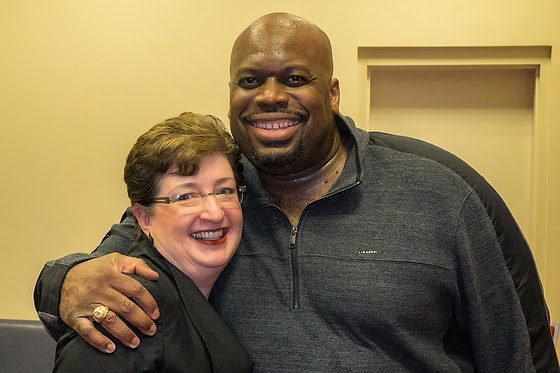| Fuji X-E2, FUJINON XF 18-55mm, ISO 6400, ƒ/10, 1/20 |
Here is a photo of my wife Dorie, a 1991 graduate of The Citadel and opera stand-out Morris Robinson. We were able to go backstage after seeing Rigoletto due to an invitation by Morris and meet some of the cast.
 |
| Fuji X-E2, FUJINON XF 18-55mm, ISO 6400, ƒ/10, 1/25 |
Here Dorie is with Todd Thomas, who played the lead role of Rigoletto.
The opera Rigoletto was sung entirely in Italian with subtitles in English above the stage. I quickly realized that the opera was similar to my overseas coverages when working in a language I did not speak.
The first few minutes are difficult because I am not quite getting the story due to the translation taking a while.
You find yourself relying more and more on the acting and the music to help bring you into the moment’s mood. However, I also rely heavily on body language and visual cues when I am shooting overseas.
When people look at my photos, the photos don’t have audio or text for the most part. So if the opera relied heavily on the words to tell the story, I was more or less not getting it very well. Hard to read subtitles and pay attention to the actions simultaneously.
Opera helped remind me of what words and pictures need each other. The visuals will often do a much better job telling the story; other times, the words must carry the heavy load of the storytelling.
Neither one alone did a great job without the other.
I recommend going to an opera for visual storytellers, especially if you don’t know the language. It forces you to see how much visuals can do, the limits, and how important words are to the complete package.


















